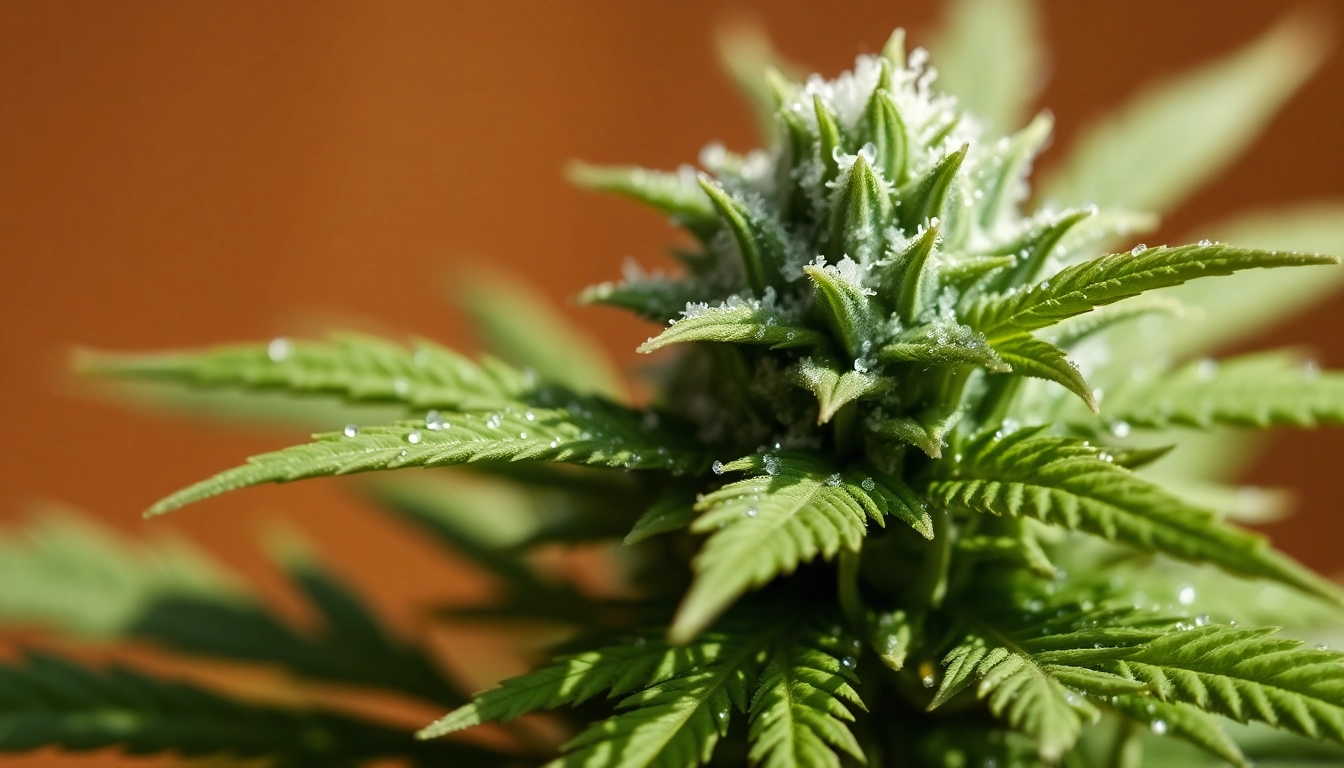Understanding White Widow: A Balanced Hybrid
White Widow stands as one of the most recognized names in the cannabis world, celebrated for its balanced effects and popularity among a broad spectrum of enthusiasts. Originally developed by Shantibaba at the Greenhouse Seed Company in the Netherlands, this hybrid strain combines the best qualities of both Cannabis indica and Cannabis sativa. Whether you’re a seasoned grower or a curious consumer looking to explore the therapeutic potential of cannabis, a deeper understanding of white widow promises rewarding insights.
Origin and Parentage of White Widow
White Widow emerged during the early 1990s, born from a Brazilian sativa landrace crossed with a South Indian indica. The strain gained notoriety for its exceptional resin production and balanced effects, captivating growers and users alike. This hybrid exhibits a genetic profile that leans slightly toward sativa—approximately 60% sativa and 40% indica—allowing for stimulating effects without the heavy sedation often associated with indicas.
Cultivation Basics for White Widow
White Widow thrives in both indoor and outdoor environments, making it versatile and accessible for a variety of growers. When growing indoors, a controlled environment can maximize its full potential, yielding between 18 to 21 ounces per square meter under optimal conditions. Outdoor plants can produce up to 25 ounces each, given they receive adequate sunlight and care.
Flavors and Aromas: What to Expect
The sensory experience of White Widow is one of its highlights. Users often describe its aroma as a pungent blend of earthy, pine, and floral notes, underscored by a hint of sweetness. When consumed, the flavor profile can include a mix of spicy, herbal, and sweet undertones, providing a gratifying smoke or vapor experience. This complexity in flavor and aroma contributes to the strain’s lasting appeal among cannabis connoisseurs.
Health Benefits Associated with White Widow
White Widow is not just popular for its recreational use; it also offers several therapeutic benefits. With a THC content that averages between 20% and 25%, it’s recognized for its potency in alleviating various conditions.
Therapeutic Effects and Uses
Patients suffering from stress, anxiety, and chronic pain have reported significant relief from White Widow. Its uplifting effects can help enhance mood, curb depressive symptoms, and encourage social interaction, making it suitable for those seeking therapeutic benefits without the heavy drowsiness often associated with stronger indicas. Additionally, its ability to foster a creative mindset makes it a popular choice among artists and musicians.
White Widow in Medical Cannabis
As medical cannabis gains traction in various regions, White Widow’s reputation has earned it a prominent place on many lists of recommended strains. Medical practitioners often recommend it for conditions such as PTSD, migraines, and muscle spasms. Its balanced effects make it a viable option for both seasoned users and novices.
Feedback from Users and Reviews
User reviews consistently highlight White Widow’s vibrant high and therapeutic benefits, with many praising its reliability and effect duration. While some users note an increased sense of focus and creativity, others enjoy the subtle relaxation that doesn’t lead to a complete couch lock, which can be a concern with other strains.
Growing White Widow: Tips for Success
For those considering growing White Widow, specific strategies can significantly enhance your success rate, regardless of whether you’re a beginner or an experienced cultivator.
Optimal Growing Conditions
White Widow requires moderate to high humidity levels during its vegetative stage, transitioning to lower levels as it approaches flowering. Ideal temperatures range from 68°F to 80°F (20°C to 27°C). Providing adequate light, either through LED or HID lights for indoor growing, is critical for maximizing resin production and flower yield.
Common Challenges and Solutions
Like any cannabis strain, White Widow is susceptible to pests and diseases. Regularly checking for mites, aphids, and powdery mildew can prevent potential infestations. Furthermore, maintaining proper pH levels in the soil (between 6.0 to 7.0) and ensuring consistent watering practices can help avoid common challenges associated with cannabis cultivation.
Harvesting and Curing Techniques
Harvesting White Widow at the right time maximizes potency. Growers should monitor the color of the trichomes, aiming for a mix of clear and cloudy, indicating the optimal time for harvesting. Post-harvest, a careful curing process—typically a few weeks in a controlled jar environment—ensures that flavors and potency are preserved while preventing mold and degradation.
Effects of White Widow: What Users Experience
The effects of White Widow are closely studied and highly appreciated, making it a staple strain in cannabis circles worldwide. Understanding its impact can help users engage more consciously with their cannabis experience.
Typical High and User Feedback
Users often report an immediate sense of euphoria and uplifted mood upon consumption, followed by a gentle body relaxation without the lethargy typical of many indicas. Many find that it’s particularly useful for enhancing creativity or engaging in social settings, contributing to its status as a staple in both casual and medical cannabis use.
Comparison with Other Cannabis Strains
When compared with other strains, White Widow’s balanced profile makes it a unique choice. Strains like AK-47 may share similar potency levels but often lean more heavily toward either indica or sativa. White Widow stands out for its harmonious blend, allowing users to enjoy the stimulating effects of sativa while mitigating some of the more potent sedative effects of indica-dominant strains.
Cautions and Considerations
Despite its many benefits, users should approach White Widow with caution, especially those new to cannabis. The high THC content can lead to paranoia or anxiety in susceptible individuals. It’s advisable to start with lower doses and gradually increase as one assesses their tolerance and experience with the strain.
Finding Quality White Widow Products
In the ever-growing cannabis market, sourcing quality White Widow products can be challenging. Here are steps to ensure you get the best out of your investment.
Choosing Reputable Dispensaries
Seek out dispensaries known for their commitment to quality and transparency. Look for stores that provide clear descriptions of their strains and are willing to answer your questions about sourcing, growing practices, and lab testing. Online reviews from fellow users can also provide valuable insights into the reliability of a dispensary’s offerings.
Understanding Lab Testing and Quality Assurance
Trustworthy dispensaries will offer lab testing results for their products, showing cannabinoid profiles, terpene content, and safety evaluations for pesticides and contaminants. Familiarize yourself with how to read these lab reports, as they are crucial indicators of product quality and safety.
White Widow Seeds: Where to Buy
When looking for quality White Widow seeds, consider reputable seed banks or trusted online retailers that specialize in cannabis seeds. Look for those with a track record of providing robust, genetically stable stock. Reading reviews and taking note of germination rates and user experiences can provide additional confidence in your purchase.






